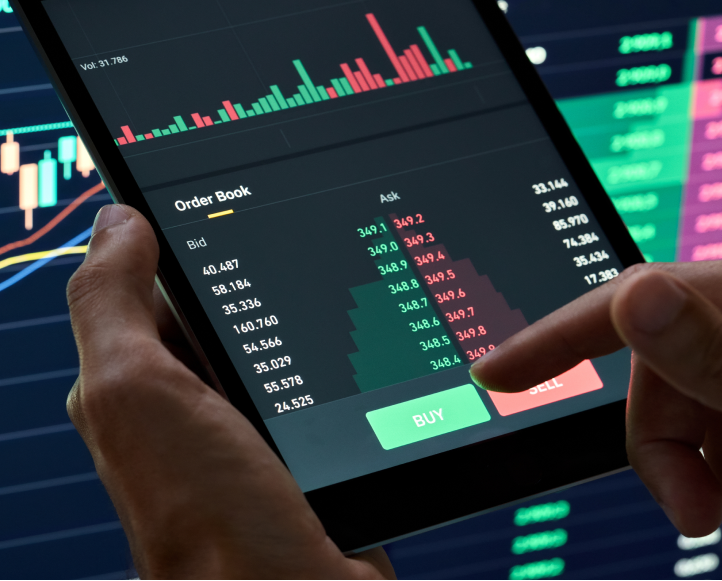
Exploring the Future of Crypto Trading Platforms
In recent years, the rise of cryptocurrencies has changed the landscape of finance. With the surge in popularity, a multitude of Crypto Trading Platforms https://blockchainatcolumbia.org/ have emerged, allowing users to buy, sell, and trade digital assets with ease. As more individuals and institutions enter the cryptocurrency market, understanding these platforms becomes increasingly important.
What Are Crypto Trading Platforms?
Crypto trading platforms are online services that facilitate the buying, selling, and trading of cryptocurrencies. These platforms can be broadly categorized into two types: centralized and decentralized exchanges.
Centralized Exchanges (CEX)
Centralized exchanges are third-party platforms that act as intermediaries. They hold and manage user funds, enabling transactions between traders. Popular examples include Binance, Coinbase, and Kraken. Centralized exchanges offer user-friendly interfaces, high liquidity, and a wide variety of trading pairs. However, they require users to trust the platform with their assets and often have regulatory requirements to comply with.
Decentralized Exchanges (DEX)
In contrast, decentralized exchanges allow users to trade directly with each other without relying on a central authority. These platforms use smart contracts and blockchain technology to facilitate trades, enhancing user privacy and security. Notable DEXs include Uniswap, SushiSwap, and PancakeSwap. While they offer greater autonomy and lower fees, DEXs often have lower liquidity and can be less user-friendly for beginners.
Key Features to Look for in Crypto Trading Platforms
When choosing a crypto trading platform, several critical factors should be considered:

Security
The security of a trading platform is paramount. Users should look for platforms that utilize advanced security measures such as two-factor authentication (2FA), cold storage for funds, and a good track record of safeguarding user assets.
User Interface and Experience
A user-friendly interface can make all the difference, especially for newcomers to the crypto space. Platforms that offer easy navigation, comprehensive educational resources, and a responsive customer support team can enhance the trading experience significantly.
Liquidity
Liquidity refers to how easily assets can be bought or sold without significantly affecting their price. Higher liquidity is beneficial as it allows for quicker transactions and more accurate pricing. It’s essential to choose platforms that have a robust trading volume.
Fees
Different platforms have varying fee structures, including trading fees, withdrawal fees, and deposit fees. Understanding these costs is vital to ensure that the chosen platform aligns with your trading strategy.
Asset Variety
The number of cryptocurrencies available for trading can influence your trading strategy. A diverse range of assets allows traders to develop varied portfolios and explore investment opportunities without the need to switch platforms.
The Future of Crypto Trading Platforms

The future of crypto trading platforms is driven by several trends that are set to redefine how individuals interact with cryptocurrencies:
Increased Regulation
As cryptocurrencies gain mainstream attention, governments around the world are beginning to introduce regulations to protect investors and reduce fraud. Future trading platforms will need to navigate these regulations while providing a secure and user-friendly experience.
Integration with Traditional Finance
In the future, we can expect crypto trading platforms to integrate more seamlessly with traditional financial systems. This convergence will enable more users to access cryptocurrencies through their existing banking services, opening the door for corporate investments and broader adoption.
Advancements in Technology
Technological advancements such as decentralized finance (DeFi), artificial intelligence (AI), and blockchain scalability solutions will play a crucial role in enhancing the capabilities of trading platforms. These technologies promise to create more efficient, secure, and user-centric trading environments.
Enhanced User Experience
As competition increases, platforms will likely invest more in optimizing user experience. Expect to see features such as advanced charting tools, trading algorithms, and artificial intelligence-driven insights becoming standard offerings.
Conclusion
The landscape of crypto trading platforms is continuously evolving, reflecting the dynamic nature of the cryptocurrency market. By understanding the types of platforms available, their features, and the trends shaping their future, traders can make informed decisions and navigate this exciting financial frontier with confidence. Whether you are a novice looking to make your first trade or an experienced trader exploring advanced strategies, the choice of a reliable crypto trading platform will significantly impact your trading success.
